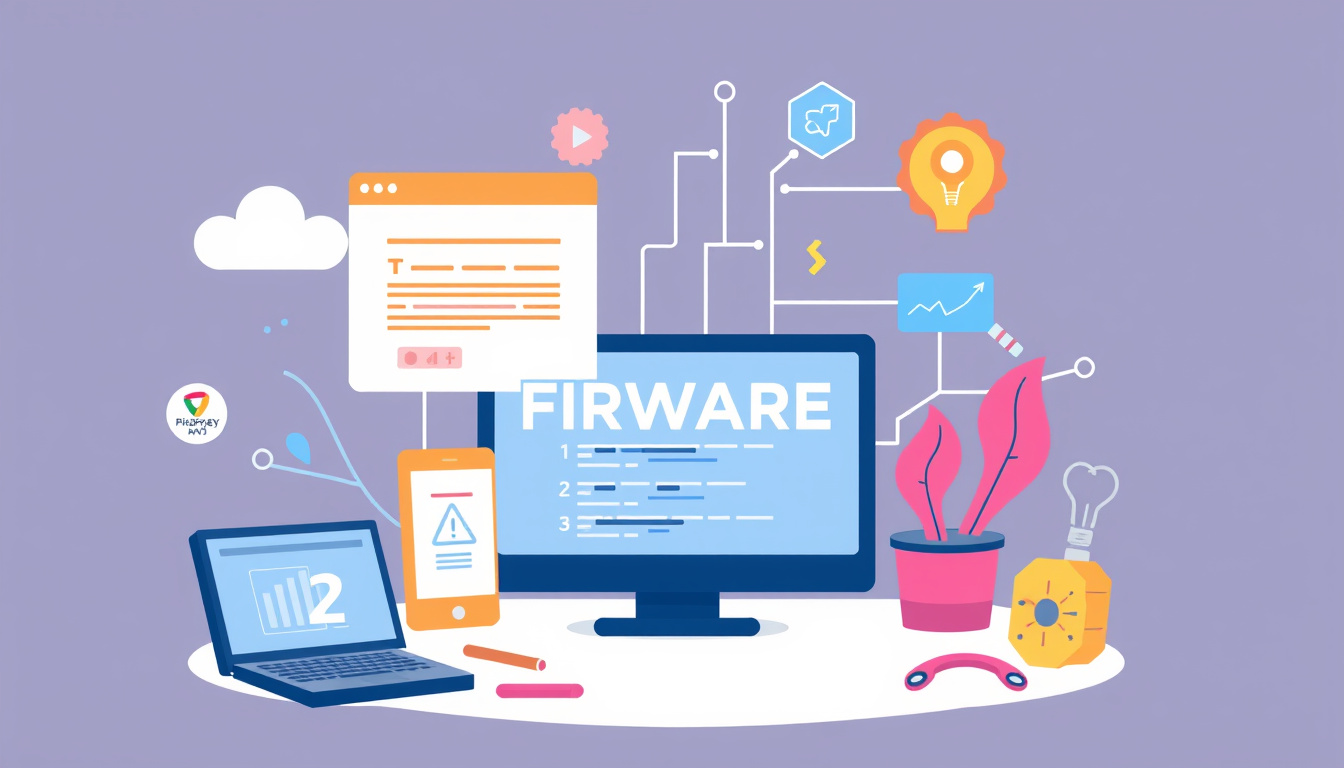Firmware plays a crucial role in the functionality and performance of a wide array of devices, from personal computers to home appliances and automobiles. Often described as the intermediary layer between hardware and software, firmware ensures the proper operation of electronic devices by providing essential instructions for hardware interactions. In this guide, we will explore what firmware is, its applications, how to update it effectively, and the important considerations regarding firmware security.
What is Firmware?
Firmware is a specialized type of software that is embedded directly into the hardware of a device, providing the underlying control needed to operate it efficiently. Unlike standard software that users interact with regularly, firmware operates behind the scenes to facilitate communication between the device’s hardware and its software applications. Typically stored in non-volatile memory such as ROM, EEPROM, or flash memory, firmware often controls basic operations necessary for the hardware’s functionality.
The term "firmware" was popularized by computer scientist Ascher Opler in 1967, bridging the concepts of hardware (the physical components) and software (the programs that run on it). As devices have evolved, firmware has become more diverse, falling broadly into three categories:
- Low-level firmware: This is intrinsic to the device and is often not updatable. It resides in non-rewriteable memory.
- High-level firmware: This can be updated to add features or fix bugs, usually residing in flash memory.
- Subsystem firmware: Found in embedded systems of devices like CPUs and displays, allowing them to operate semi-independently.
Applications of Firmware
Firmware is integral to a variety of devices across multiple sectors, enabling them to perform specific tasks. Here are some notable applications:
Computers
In personal computers, firmware components such as BIOS (Basic Input/Output System) or UEFI (Unified Extensible Firmware Interface) manage hardware initialization during the startup process, operating just below the operating system.
Consumer Electronics
Devices like gaming consoles, digital cameras, and portable music players utilize firmware updates to enhance user experience, improve performance, and introduce new functionalities, such as compatibility with additional file formats.
Automotive Systems
Modern vehicles rely heavily on firmware to control various onboard computer systems that manage everything from performance diagnostics to anti-lock braking systems.
Internet of Things (IoT)
Firmware is crucial for smart devices, allowing them to communicate wirelessly with other devices or networks, receiving updates over the air (OTA) to enhance security and functionality.

Updating Firmware: Best Practices
Keeping firmware updated is essential for device performance and security. Here’s a guide on how to approach firmware updates:
-
Check for Updates Regularly: Manufacturers often release updates to patch security vulnerabilities or improve device functionality. Ensure that you monitor the manufacturer’s website or utilize built-in features for firmware version checks.
-
Follow Manufacturer Instructions: Each device has specific firmware updating procedures. Adhering strictly to these guidelines is essential to prevent risks such as bricking the device—rendering it useless due to interrupted or faulty updates.
-
Backup Current Firmware: If the device allows, always back up the existing firmware before proceeding with an update. This can help restore functionality if the new update leads to issues.
-
Power Stability: Ensure that the device remains powered throughout the update process. Updates should not be attempted during power surges or outages.
-
Reverting Updates: Know how to revert to an older firmware version if the new one introduces problems. This is crucial for maintaining device usability.
Firmware Security Concerns
Despite the importance of firmware, it can also pose security risks. Vulnerabilities in firmware may allow cybercriminals to exploit devices, leading to unauthorized access and control over hardware. Some common security considerations include:
-
Zero-day Vulnerabilities: These are security flaws that manufacturers are unaware of; consequently, there may be no available patch. Regularly monitoring security publications can help users stay informed about potential risks.
-
Malware: Malware can be embedded into firmware through various attack vectors, posing significant security threats to device integrity and data privacy.
-
Regular Updates Force Vulnerability: Firmware updates may occasionally introduce new vulnerabilities. Cybersecurity measures, including intrusion detection systems, can help mitigate risks associated with updated but flawed firmware.
Conclusion
Firmware is an essential yet often overlooked component of modern technology that plays a vital role in the operation of electronic devices. By understanding what firmware is, how it functions, and the need for regular updates, users can significantly enhance the performance and lifespan of their devices. Furthermore, through attentiveness to security concerns, users can protect themselves from potential threats associated with outdated or vulnerable firmware. With this knowledge, you can effectively harness the power of firmware to optimize your devices for the best performance.



